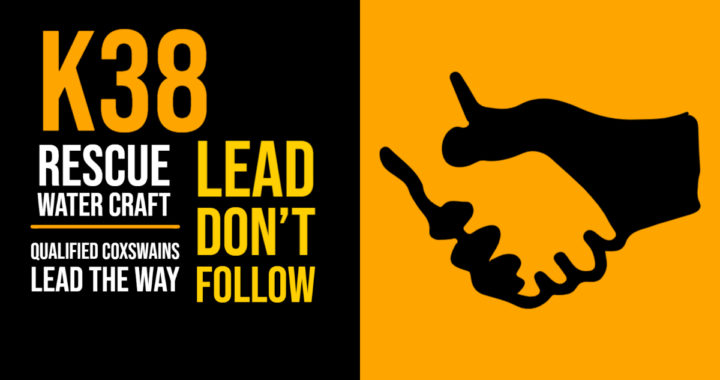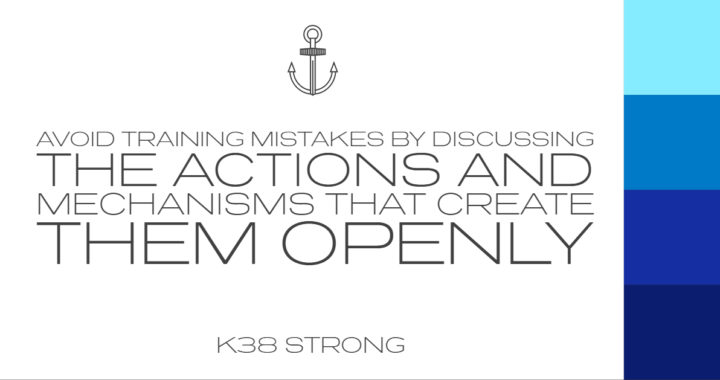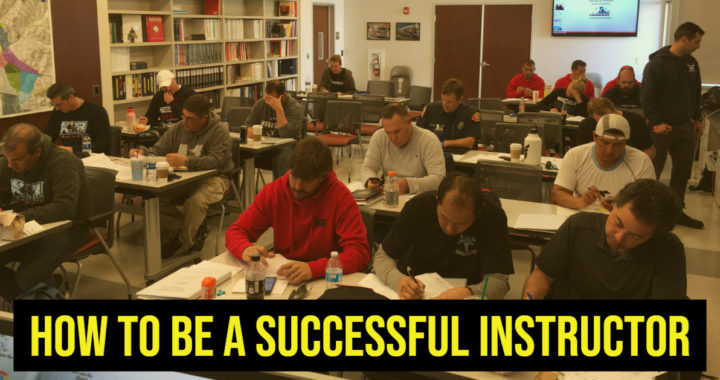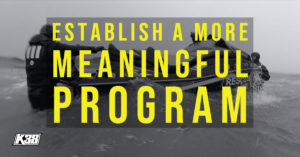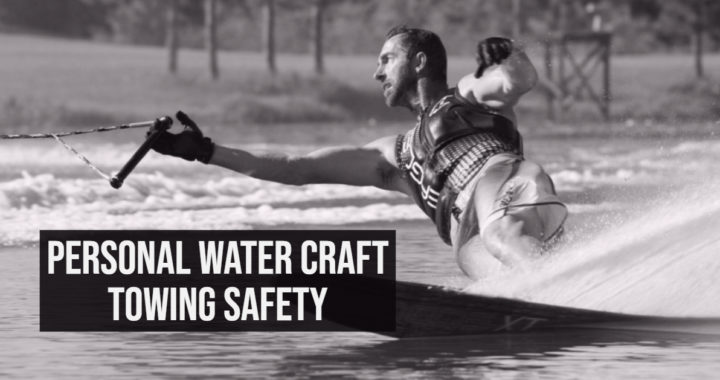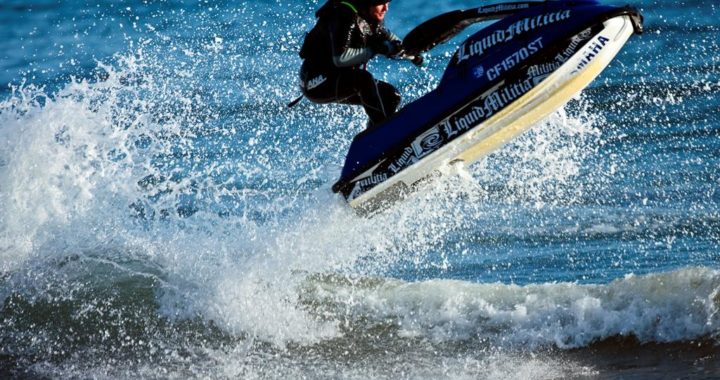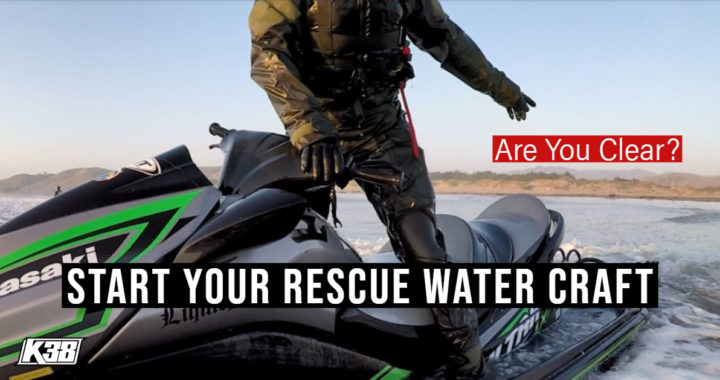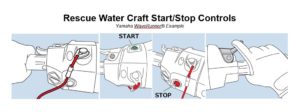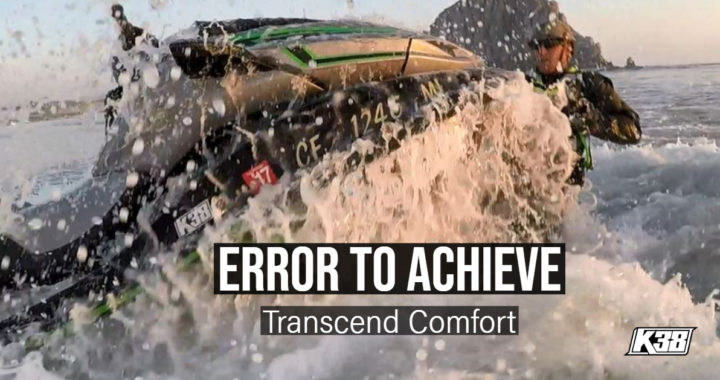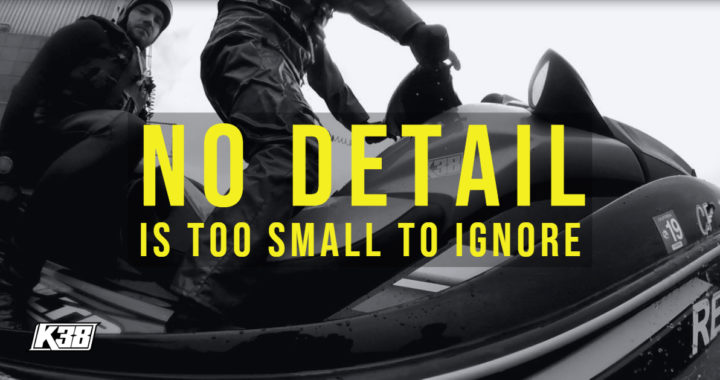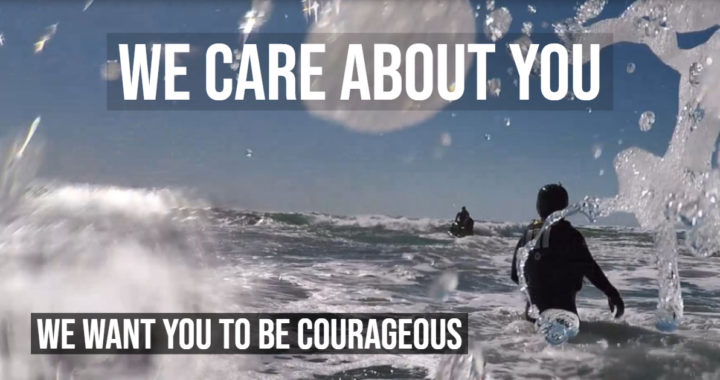SECURING YOUR RESCUE WATER CRAFT TO THE TRAILER
Proper Rescue Water Craft loading onto the trailer is dependent upon a few contributing factors.
We will take a look at suggestions you could use to help your RWC and trailer tie-downs.
In our K38 courses we are teaching the repetitive responsibilities from maintenance, to trailering to operations. There is a lot to learn!
This is specifically related to boat ramp launches.
Tidal considerations change the elevation of the placement of the trailer, don’t place too much of the trailer bunkers completely submerged.
Leave the forward leading edges of the guide bunks exposed.
The more float you have on the RWC the more obverse the angle will be for affixing the bow trailer tie down.
If you are using a hand winch from the trailer to the Rescue Water Craft bow eye, do not lose tension on the handle. If you fail to abide by the safety practices under load you can hurt yourself.
The winch handle will snap back under tension and strike your head or your forearm. Make sure you have a firm hand grip and align your body appropriately so you do not create an injury.
If this tie down or hand winch line is too taught, the bow will be in good position, however the stern of the craft(s) will be risen.
Make sure you are in a flat and level location and not on the boat ramp itself to correct this. This can lead to loss/damage of craft or injury.
Ensure that you have a stern safety strap in place if any incline. Do not disconnect the trailer from the tow vehicle.
This causes stress on the bow eye cleat.
Can damage the trailer tie down.
May lead to injury if hands and body position are not in a safe position from the release of the physical load back onto the trailer.
Do not lose the bow connector point with a fixed metal X hook or closure.
Make sure your Rescue Water Craft is properly loaded and centered on the bunks.
You should not have the stern of the Rescue Water Craft sticking out from the back of the trailer, it should end at the last part of the trailer in perfect alignment.
You may have to push the Rescue Water Craft forward if the RWC slides back.
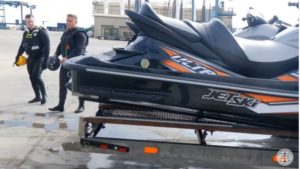
WATCH YOUR TRAILER ANGLE
When learning it is easy to forget the patterns in the sequence, that is quite normal. Repetition and a ‘walk around’ the trailer will clue you into what you missed.
So, lets go over it again:
1. Observe the angle of the floating Rescue Water Craft to the angle of the Trailer.
2. When you secure on a steep angle remember the RWC will slide back slightly when you pull forward when using a tie down strap. Most trailers have hand winches, but not all.
3. Pull up off the boat ramp and inspect the Rescue Water Craft to ensure it is level. If it is not, reset the bow tie strap.
4. Make sure your Rescue Water Craft is centered on the trailer bunks and not overhanging off the stern of the trailer. It should be aligned properly.
Certainly, you can add additional steps and corrections to this as you see fit. Not all trailers, winches, Rescue Water Craft and tie downs are the same.
You will have to interpret according to you own equipment and location for loading the necessary patterns.
The more you practice this, like all things in your RWC program, the better you will get.
Make sure your entire team knows about the ‘walk around’. At first learning is a bit of an overload because your mind is focusing. Over time you adapt and it becomes a normal behavior.
The more you practice, the better your mind relates to safety.
Remember: Safety is a Behavior.
Posted: February 27, 2020
Author: Shawn Alladio, Subject Matter Expert for RWC
Content Creator of Rescue Water Craft and Personal Water Craft boating international education standards: Shawn Alladio is the world’s foremost authority and leading subject matter expert. She cares most about her community and the culture surrounding the safety of event service providers and Rescue Water Craft operators, working hard and dedicated towards protecting their reputation, distributing safety information and continuing to train these amazing individuals to the highest standards of care.
__________
Have any questions? Come train with us and discover what your community is doing to modernize standards, safety and reduce liability!
Caution: Visit page terms and conditions. Use at your own risk. Please take a qualified Rescue Water Craft training course and maintain proper records and respect all the PWC, RWC, PPE, and gear OEM manufacturer warning labels and cautions.
